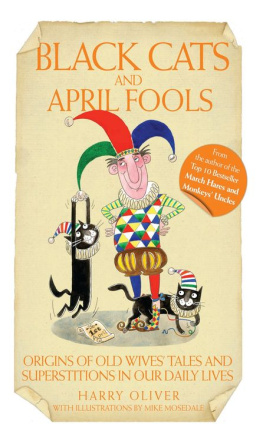Published by Adlard Coles Nautical
an imprint of Bloomsbury Publishing Plc
50 Bedford Square, London WC1B 3DP
www.adlardcoles.com
Text copyright Jonathan Eyers 2011
Illustrations copyright K S Ellis 2011
First edition published 2011
All rights reserved. No part of this publication may be reproduced in any form or by any means graphic, electronic or mechanical, including photocopying, recording, taping or information storage and retrieval systems without the prior permission in writing of the publishers.
The right of the author to be identified as the author of this work has been asserted by him in accordance with the Copyright, Designs and Patents Act, 1988.
A CIP catalogue record for this book is available from the British Library.
Print ISBN 978-1-4081-3131-2
ePub ISBN 978-1-4081-5897-5
ePDF ISBN 978-1-4081-3213-5
Contents
The author wishes to thank Darrel Brown and the members of the Muskegon Conservation Club, Michigan, for their assistance whilst putting this book together.
Note: While all reasonable care has been taken in the publication of this book, the publisher takes no responsibility for the use of the products or methods described in the book. Especially those that involve throwing perfectly good alcohol overboard.

For Pat and Brian Eyers

If a landlubber scoffs at one of the many superstitions surrounding the sea, he or she should be prepared for at least one salty old seadog to knit his brow, set his jaw and say, Ah, but what about the HMS Friday?
During the mid-1800s so the story goes the Royal Navy decided to prove there was nothing unlucky about Friday, a superstition on land as well as at sea which made sailors wary of leaving the former for the latter on that day. The HMS Fridays keel was laid on a Friday, she was launched on a Friday, and she set sail on her maiden voyage on a Friday. The Navy had even managed to find a captain named James Friday to command her. Naturally she disappeared without trace before she even reached her first port of call.
Of course, there never was an HMS Friday. But sailors remain a notoriously superstitious lot. Some of their superstitions are amusing in their own right, others have fascinating origins, whilst for many there are bizarre anecdotal incidents which would appear to lend some credence to these odd beliefs. This book explores the folklore of the sea in an entertaining but informative way.

Theres no point telling a salty old seadog the Royal Navy never named a ship the HMS Friday, though. He will already have a response: See? Even the Navy is superstitious!




Only a landlubber would think a boat is no more than a few carefully put together pieces of wood or fibreglass with a sail up top or an engine behind. A boat is never just a boat. From the time the crew weighs anchor, draws in a mooring rope, raises the mainsail or starts the outboard until the point they step ashore again, the vessel is their home, their shelter, the only thing between them and the fathoms below. And, if things go wrong, she might also be their coffin.
During the Age of Sail, it wasnt only the pressganged ranks of the Royal Navys warships that were subject to the unforgiving wrath of a brutal higher authority. Centuries before radio, Mayday calls, inflatable life rafts, EPIRB sets and Coastguard helicopters, a life at sea meant a life in the hands of the gods or fate. Superstitions gave sailors a sense of power a sense that they werent completely at the mercy of providence, and that there were things they could do (or not do) to exert some influence over the situations their captains sailed into.
Despite all the wonderful advances in maritime safety and technology, however, we still hear about those who take to the water but never return. So it isnt surprising that the superstitions of old have not only survived, but thrived. They are a tried and tested code of conduct, a religion of the sea. And these superstitions take hold before a boat is even out of the boatyard.

Which wood would be good?
Its easy to imagine the crew of the Aaron Manby breaking into cold sweats before her maiden voyage in June 1822. She was, after all, the first iron ship to go to sea. Before then sailors could at least take some comfort in the fact that their ships were built of a material that floats. Though most pleasure craft these days are made of fibreglass, wood has been at the heart of boatbuilding for millennia, so the wisdom of the ages has plenty to offer those who still hanker for a clinker-built craft.
Wood from apple, pear, cherry and elm trees should not be used, though. Before savvy funeral directors started using the much cheaper (for them) veneered chipboard, these woods were used for coffins. There are numerous superstitions that warn against invoking funerals or anything else surrounding death, and in this instance theres a lot to be said for not going to sea in a big coffin. Practically speaking, though, apple trees grow in a twisted fashion that makes the wood unsuitable for construction purposes, and elm decays far too quickly when it goes from wet to dry repeatedly.
Though it makes nice furniture, wood from a walnut tree should not be used in hull construction either. Early settlers in North America were convinced the walnut attracted lightning, whilst many Europeans believed the tree was haunted by witches. Its true that walnut releases a chemical called juglone into the soil, which kills everything from birch and apple trees to tomatoes and potatoes, so the bad reputation must stem from the fact that not much will grow near it.
Oak, on the other hand, was the longstanding wood of choice in shipbuilding, and for good reason. Not only does its timber have great strength and hardness, but the tree has a stellar reputation dating back to the Ancient Greeks, who venerated it as the tree of Zeus. Its steadfast nature and protective qualities have been celebrated ever since, from early Christians using it to build their churches, to Siberian tribes that decorated oak trees in reindeer pelts and made donations of kettles and spoons to them. Like the walnut, the oak also has a reputation for being struck by lightning, but perhaps because it doesnt kill the spuds too this has been seen as a protective gesture towards us instead.



















